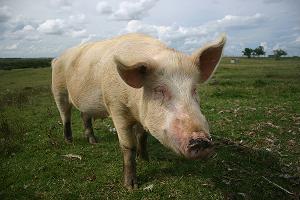Supported by the Pork Cooperative Research Centre, Ms Lealiifano's research found that giving boars a secondary anti-GnRF vaccination two weeks before market effectively controlled 'boar taint'.
"Traditionally boar taint has been controlled by surgical castration in the first week of life, but surgical castrates tend to be fatter and convert feed less efficiently than entire male pigs," Ms Lealiifano said. "This in turn increases cost of production and reduces the overall value of the pig."
Pigs vaccinated with the anti-GnRF vaccine Improvac effectively showed control of boar taint, while also benefiting from the production advantage of all the performance attributes of an entire male until it received the second vaccination, which is normally recommended at four to five weeks pre-slaughter.
"While it's still recommended that the second vaccination is given four weeks preslaughter, our results mean that if producers find a proportion of pigs have reached the target slaughter weight only two or three weeks after the second vaccination, then they can be safely sold as free of boar taint," Ms Lealiifano said. "This, of course, relies on pigs correctly receiving the first and second vaccinations."
Ms Lealiifano said the experiment also showed that as the time between the second vaccination and slaughter increased so too did the increase in back fat.
"This increase means some producers and processors might question the use of Improvac, regardless of how well it can control boar taint," she said. "Showing that boar taint could be controlled without increasing back fat when pigs receive the second vaccination just two weeks preslaughter, greatly improves Improvac's attraction."
Ms Lealiifano stressed that producers contemplating using Improvac this way should first discuss the strategy with their veterinarian/nutritionist and ensure no pigs are sent to slaughter less than two weeks post-vaccination.
Ms Lealiifano recently presented her Improvac research at the 12th biennial conference of the Australasian Pig Science Association (APSA), Cairns, Queensland, where she received a trophy and $2000 cheque for winning the Pork CRC Award for best presentation at APSA.


